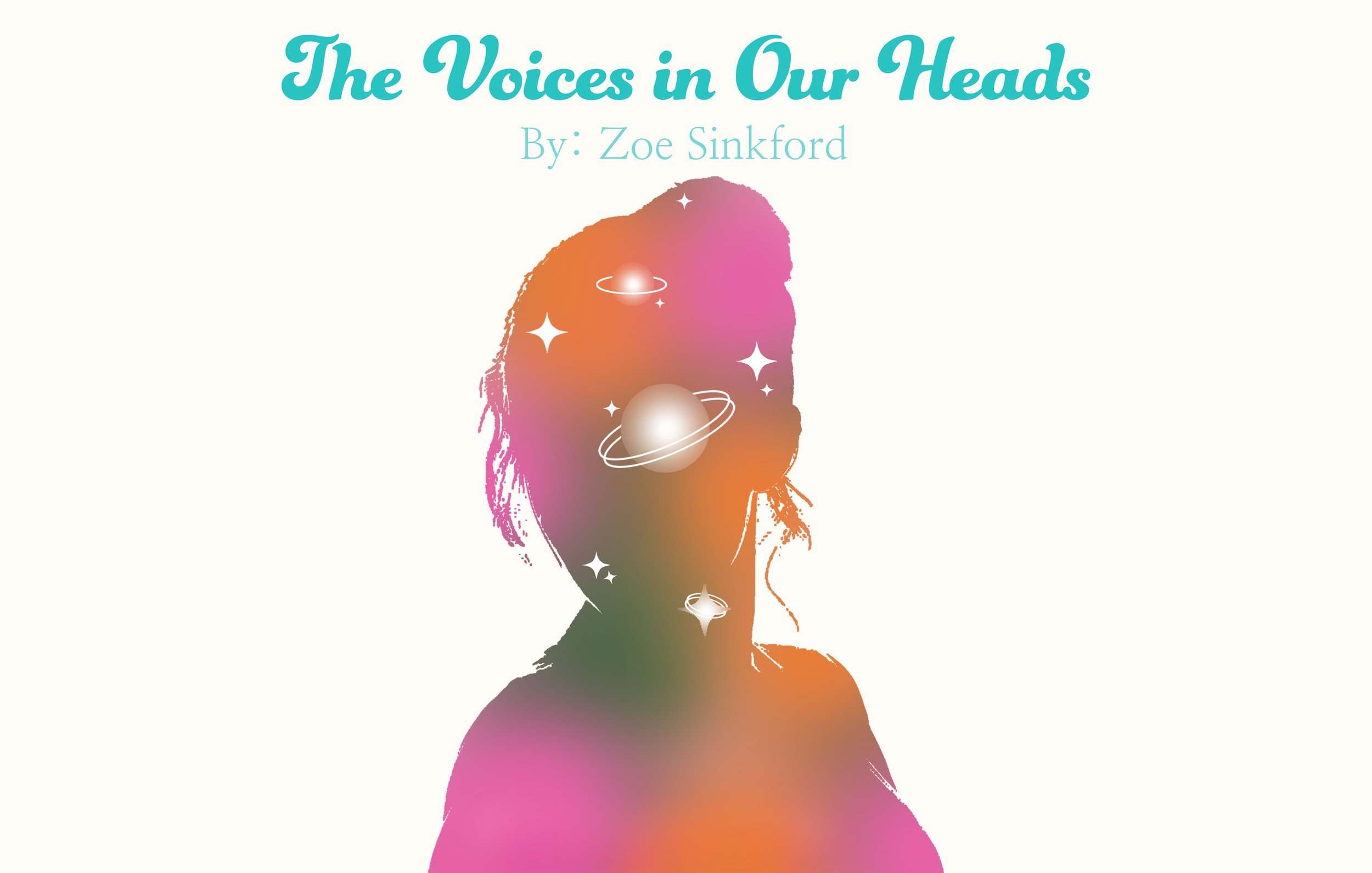April 29, 2022
Editor: Autumn Bryant
Artist: Demetria Dresser
Let’s get one thing straight: I talk to myself. A lot. Never in a way that is manic or concerning, but my inner monologue is always rambling. I am an auditory learner; I learn best when I hear other people’s explanations of things, or when I can talk to someone else about whatever it may be that I am learning at the time. After a late night conversation with my housemates, I discovered that not only do people learn differently, but they also ‘think’ and process information differently.
Interestingly, the first place our diversities in thinking begin is with verbal thinking or “Inner speech”. Just as we first learn to speak and communicate as babies, our inner speech quickly follows, and from there develops individually based on the person. There are multiple different types of inner speech, and it can serve many different purposes. Inner speech plays a large role in our motivation, how we express ourselves emotionally, as well as how we understand ourselves as irrevocably different from ourselves from those around us.
Lev Vygotsky, a renowned psychologist known for his work in child development, considered inner speech to be a mechanism used to aid children while performing tasks. When we are really young, this type of monologue begins out loud; oftentimes, while watching children play with toys, you can hear them say “this is the shirt Barbie is going to wear”, or “this shirt looks like my mom’s shirt”. As we mature, however, this monologue becomes increasingly silent so that our thoughts stay in our heads. Typically, most people don’t start talking out loud or muttering to themselves until they are placed into a stressful situation, or have specific tasks that they need to remember. Verbally expressing your thoughts has the tendency to make them more tangible, and therefore easier to recall later on.
While we all may start with inner speech, colloquially known as an inner monologue, for some people, that type of thinking becomes more subconscious as they mature. There are many different ways to ‘think’ that don’t involve an inner monologue, such as unsymbolized thinking. Unsymbolized thinking refers to thinking a specific thought without having the awareness of that thought being translated into words or images. If a person with unsymbolized thinking wakes up late, presumably they would not then have thoughts such as: “I need to set my alarm for earlier tomorrow” or “I should go to bed earlier”. They would simply have the realization that they are late, and proceed accordingly.
There are also other ways of thinking as well—inner seeing: visual imagery and being able to visualize certain thoughts or experiences; sensory awareness: certain people pay attention to the sensory facets of an environment without a specific reason; and Feelings: being consciously aware of an emotional process. Albeit some of us may only think and process information through one of these different modes, there are also people who can attribute their individual thought processes to more than one of these different ways of thinking.
No single form of these ways of thinking has an advantage over the other. If anything, the notion that we all process information and communicate with ourselves differently alludes to the beautiful diversity that is the human mind.
Citations:
Beck, J. (2016, November 23). The running conversation in your head. The Atlantic. Retrieved March 24, 2022, from https://www.theatlantic.com/science/archive/2016/11/figuring-out-how-and-why-we-talk-to-ourselves/508487/
Gregory, D. (2018, February 22). WWW-Frontiersin-org.proxy.lib.umich.edu. Frontiers in Psychology. Retrieved March 24, 2022, from https://www-frontiersin-org.proxy.lib.umich.edu/articles/10.3389/fchem.2020.00692/full
Soloducha, A. (2020, March 6). What it's like living without an inner monologue | CBC News. CBCnews. Retrieved March 24, 2022, from https://www.cbc.ca/news/canada/saskatchewan/inner-monologue-experience-science-1.5486969

